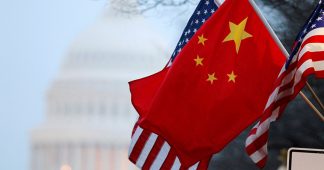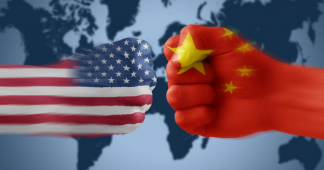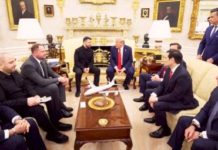By Niall Ferguson
Dec. 2, 2019
Turning Point: The United States and China intensified their trade war in 2019, plunging global markets into uncertainty.
When did Cold War II begin? Future historians will say it was in 2019.
Some will insist that a new Cold War had already begun — with Russia — in 2014, when Moscow sent its troops into Ukraine. But the deterioration of Russian-American relations pales in comparison to the rise in Sino-American antagonism that has unfolded over the past couple of years. And though the United States and China can probably avoid a hot war, a second Cold War is still a daunting prospect.
Pedantic scholars may say the new Cold War actually began with Donald Trump’s election in November 2016, or his initial imposition of tariffs on imported washing machines and solar panels, many of which are made in China, in January 2018. Others will suggest early October 2018, when Vice President Mike Pence denounced Beijing’s use of “political, economic and military tools, as well as propaganda, to advance its influence,” as a plausible starting point.
Yet it was not until 2019 that the Trump administration’s confrontational approach to China was effectively embraced by members of the policy elite on both sides of the partisan divide. With remarkable speed, Mr. Trump’s hostility went from foreign policy idiosyncrasy to conventional wisdom. Even Senator Elizabeth Warren, a Democratic presidential candidate, began calling for a tougher line toward Beijing.
Public opinion made a similar shift. A Pew Research Center survey showed that the percentage of Americans holding an unfavorable view of China jumped to 60 percent in 2019 from 47 percent the year before. Only 26 percent of Americans held a favorable view of the country.
Something else changed in 2019. What had started out as a trade war — a tit for tat over tariffs while the two sides argued about the American trade deficit and Chinese intellectual property theft — rapidly metamorphosed into a cluster of other conflicts.
In short order, the United States and China found themselves engaged in a technology war over the global dominance of the Chinese company Huawei in 5G network telecommunications and an ideological confrontation in response to the abuses of Uighur Muslim minorities in China’s Xinjiang region, as well as a classic superpower competition for primacy in science and technology. The threat also loomed of a currency war over the exchange rate for the Chinese yuan, which the People’s Bank of China has allowed to weaken against the dollar.
Older readers will probably regard another Cold War as a bad idea. Their memories of the original might include near-Armageddon experiences, such the 1962 Cuban missile crisis, and multiple conventional wars fought in countries from Vietnam to El Salvador. But there is no obvious reason Cold War II should feature nuclear brinkmanship or proxy wars.











